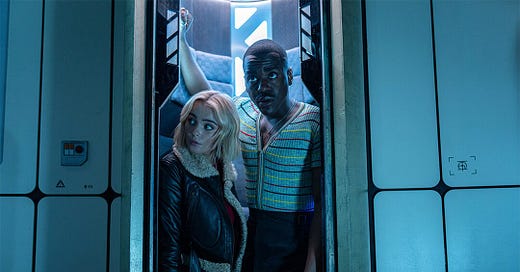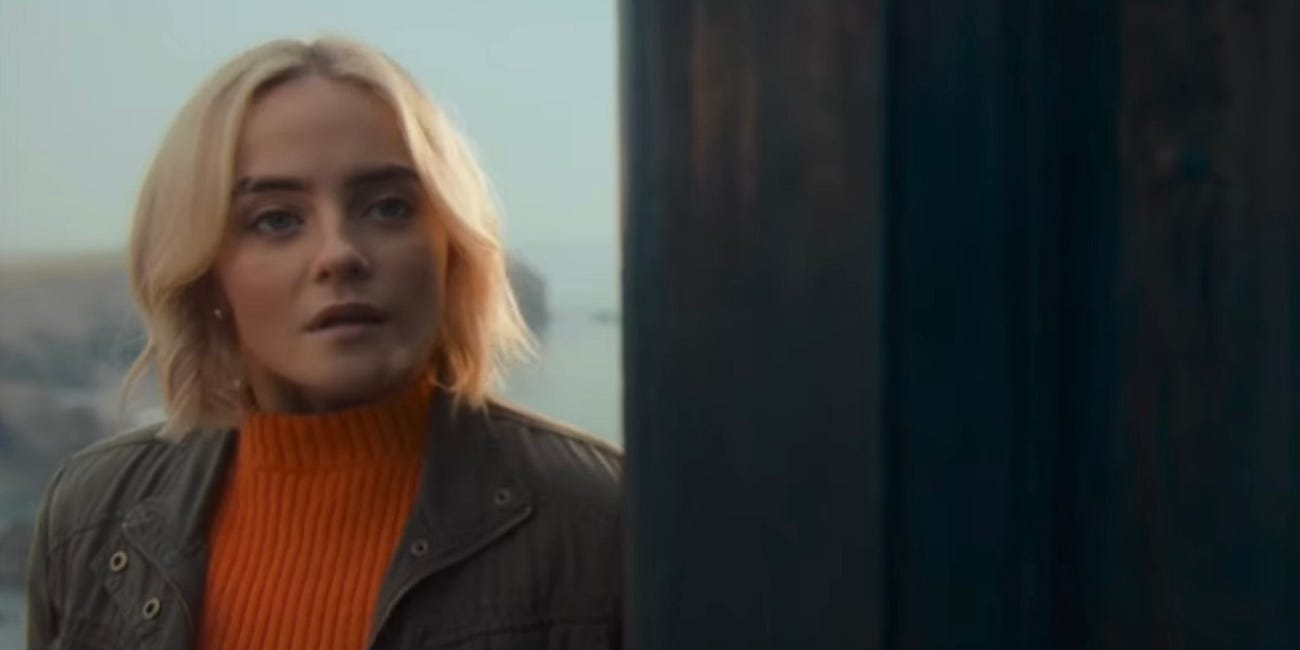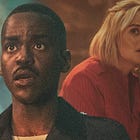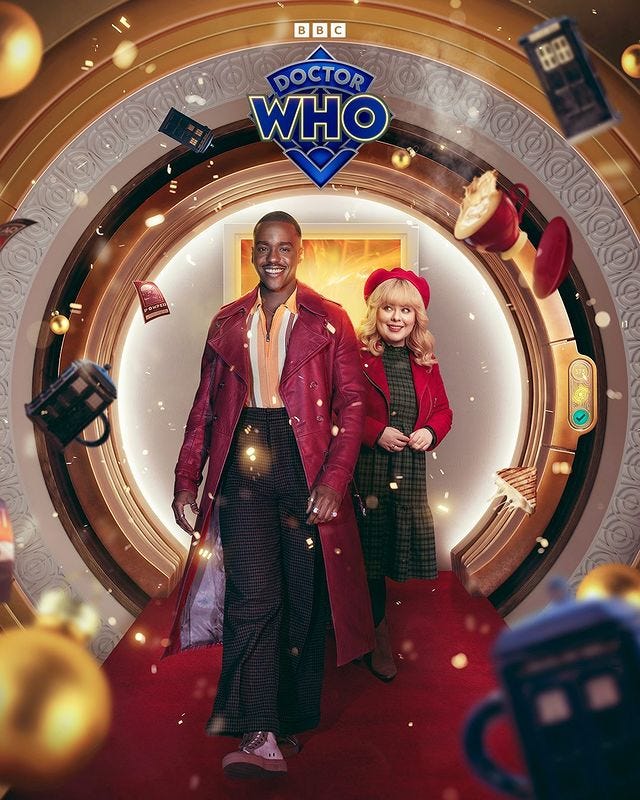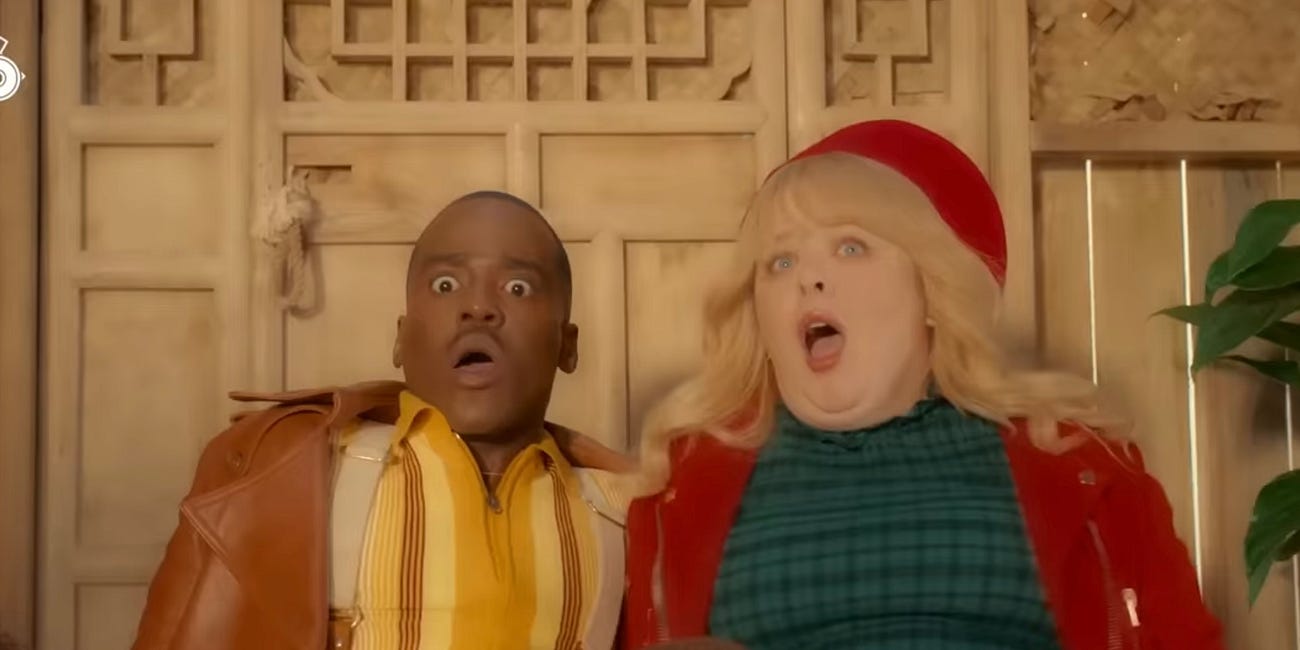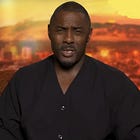'Doctor Who' Unveils Christmas Special Images, Last Season’s Deleted Scenes For 61st Anniversary
A look back at the past finished with new looks toward the immediate future with images and posters for the upcoming Christmas special
Happy Doctor Who Day! 61 years ago, the British sci-fi series Doctor Who premiered on the BBC. While the celebration was never going to be as big as three entire full-length scripted specials as the main event the 60th anniversary, the franchise has released a collection of deleted scenes that include from one of those specials as well as the ensuing regular season that aired across May and June. This follows through on a promise two weeks ago where a portion of one of those scenes was used to tease this release.
There are two scenes here from the final anniversary special “The Giggle”. The first, scenes 9-12, is right after the TARDIS arrives at UNIT headquarters and the Fourteenth Doctor, played by David Tennant, and companion Donna Noble, played by Catherine Tate are headed in. While Donna’s husband Karl, mother Sylvia, and daughter Rose were already in hiding and her grandfather Wilf was whisked away to safety from the chaotic, deemed apocalyptic circumstances that the Giggle has brought, here Donna secures they’ll be handled properly in UNIT’s care and under their supervision. Showrunner Russell T. Davies noted the cut was because “it spoils that sweeping entrance, to stop and have a chat. And get to Mel faster!”. Scene 27 sees Fourteen and Donna navigating the Toymaker’s corridors as reality warps. Davies says it was simply cut for time.
'Doctor Who' Releases Date-Appropriate Deleted Scene, Promising More For 61st Anniversary
Here we are in November again, and Doctor Who is getting ready to celebrate its 61st anniversary. Now of course, nobody is expecting anything as big as last year’s three specials marking that 60th anniversary, nor should they as nothing has been announced or scheduled, or filmed for that matter. 61 certainly isn’t monumental, but the show isn’t going to…
Also cut for time was “Space Babies” scene 16, where companion Ruby Sunday, played by Millie Gibson, relates her experience as an orphan to the Space Babies before being interrupted by the Doctor, now played by Ncuti Gatwa giddy as he goes to Portal 357, so she joins him. We of course had seen and heard the story in “The Church on Ruby Road”, but she even describes snow to these babies that have lived exclusively on the spaceship and never seen it. Davies calls cutting it a “shame” as “Millie’s wonderful here”. Scenes 40-42 are more corridor navigating as the Doctor and Ruby head to the Bogeyman’s lair, trying to figure out more about it. It was more succinct to cut it to get to the creature faster. Scene 63 has the Doctor and the creature get themselves together after the airlock incident. The Doctor gets away safely to his relief. It does survive in the episode, however, as according to Davies, “a wide shot of this scene plays on the screens behind Jocelyn”.
The second episode “The Devil’s Chord” has quite a few of its own. The first, scene 9A, is brief, where after experiencing an atonal performance of “Three Blind Mice”, the Doctor interjects “Someone has stolen music!”. It was even too convenient for Davies’s tastes, saying it “felt a bit psychic”. In scene 23, Maestro, freshly popped out of the rooftop piano, uses their cosmic tuning fork to track the retreating Doctor and Ruby’s location. It was too slow for Davies. Scene 72 has the Doctor and Ruby run back up the rooftop stairwell as the Doctor exposits about music returning to the world, which Davies knocks for putting the tell in front of what’s about to be shown. Scene 74 shows Londoners, namely a dancer, a guitarist and an opera singer rediscover music in their hearts, a sequence that Davies calls a “nice idea” but ultimately unnecessary.
“73 Yards”’s first deleted scene shows that what was released on November 9 was actually longer, with a panning shot of the cliff as Ruby sits and waits in the rocks. The woman is still watching from all those yards away. The Doctor has disappeared for some time after stepping on the fairy circle. It’s still recent enough that Ruby believes he’s selfishly holed himself up in his TARDIS, still going through the stages of grief. It seems early enough that she’s still angry, keeping track of the days, in fact being November 9, 2024. She pleads with the Doctor to stay and not go off without her. She walks off, returning with a light kick of the TARDIS and calling whatever is going on “rude”. Scenes 53 to 54 take place the morning after deposing Roger ap Gwilliam. 40-year-old Ruby finds that the woman is still watching her. Davies found it much more effective to cut on the earlier scene, when Ruby asks the Woman, “Can you leave me alone now?”
While “The Legend of Ruby Sunday” originally had Harriet’s heralding of Sutekh play out slightly differently, “Empire of Death” scene 35 features Fifteen, Ruby and Melanie Bush arrive in 2046 and the Remembered TARDIS promptly fade away since its purpose fulfilled, but Davies ended up believing it shouldn’t be that way. Instead, what aired allowed it to still be out there somewhere. Scenes 59 to 63 explain the origin of the TARDIS-controlling whistle. It turns out Fifteen programmed the TARDIS to respond to the whistle’s pitch, then used a hatch to pass the whistle back to his past self. A bit of a contrivance necessary to face down a god. At first, Davies found it too complicated to keep, but he loves it enough to have second thoughts. And it seems plenty of YouTube commenters agree he shouldn’t have cut it. Probably because it brings back “There’s Always a Twist at the End”, the ending number from “The Devil’s Chord” to play it on the jukebox. The compilation can be watched below.
The “Boom” watchalong was as fun as always. Great hearing from Steven Moffat. After it ended, both preview clips from his next written episode, next month’s Christmas special “Joy to the World”, were put together. That makes sense. However soon after, we did get new from it, with four new stills from the episode. They don’t give a lot of information but they’re still appreciated. The BBC and Disney+ each released their own posters for it too, but Disney’s calls it “Joy to the Worlds”. They're insisting explaining the titling would be spoilers for the episode like it’s the asterisk in Thunderbolts* or something. The episode airs on Christmas Day simultaneously on both platforms, domestically and internationally respectively. Expect a timeslot to be early evening UK time, afternoon to late morning in the States.
'Doctor Who' Christmas Special Clip Brings 'Joy' To Children In Need
It’s that time of year again! The United Kingdom is gearing up for the Christmas season, and so they have their annual Children in Need telethon. And as always, the long-running sci-fi series Doctor Who has brought something that will bring smiles to the children’s faces. While last year had a scripted short starring
Sources: Doctor Who, The Black Archive

